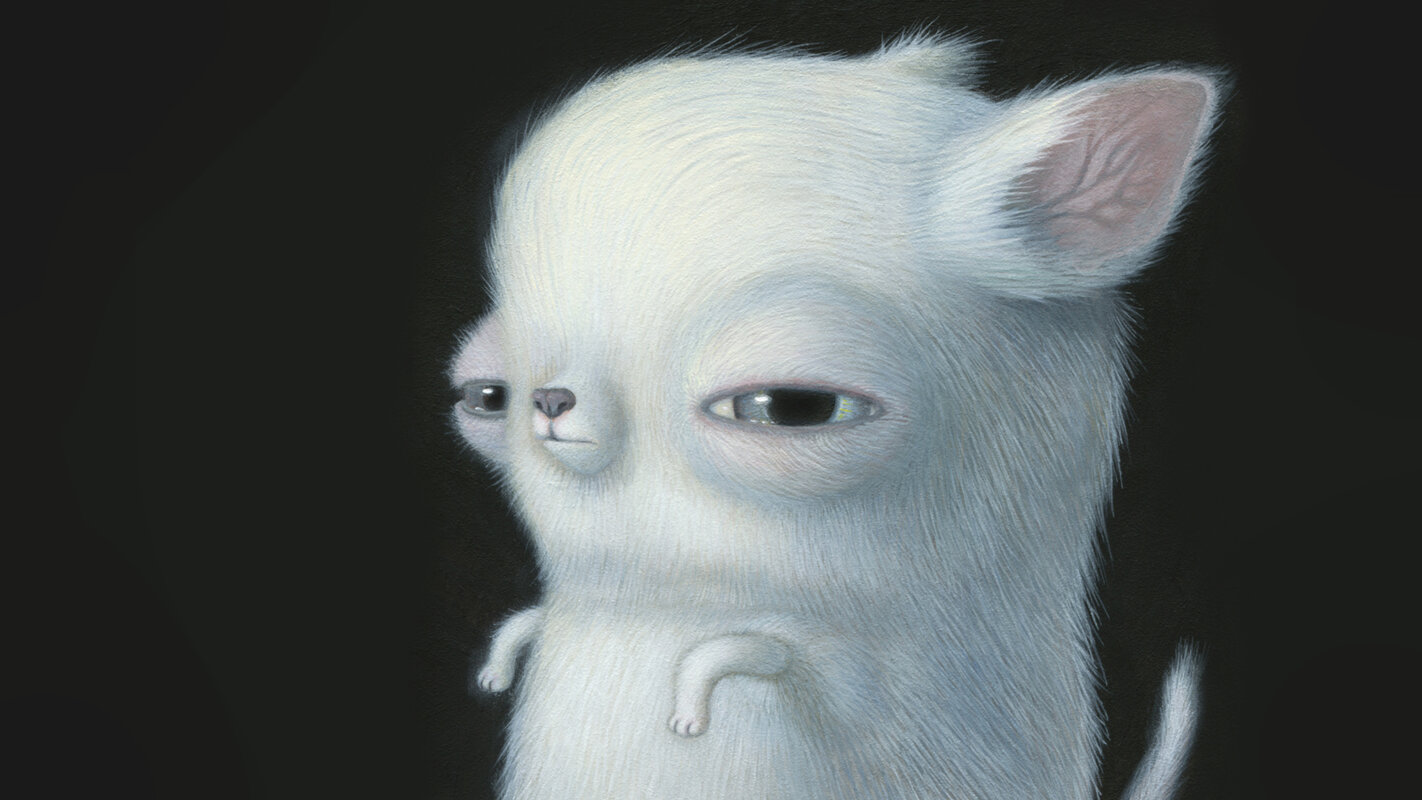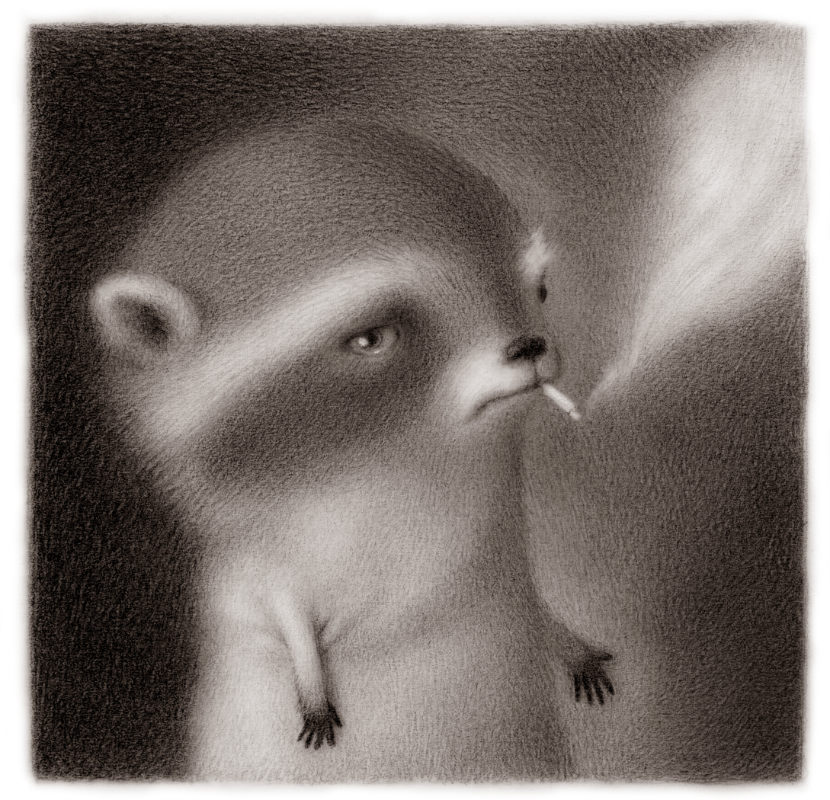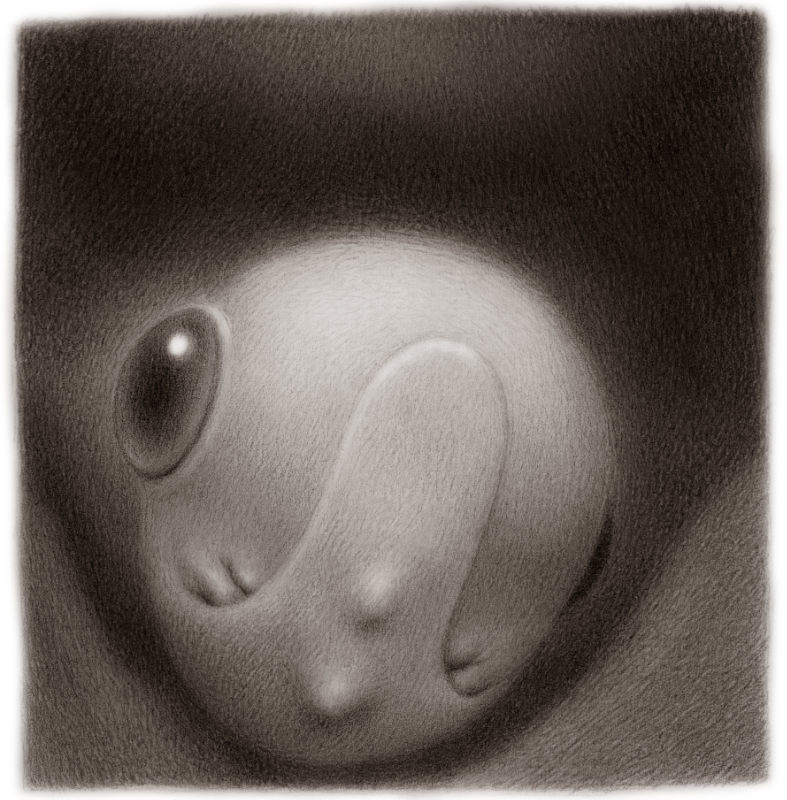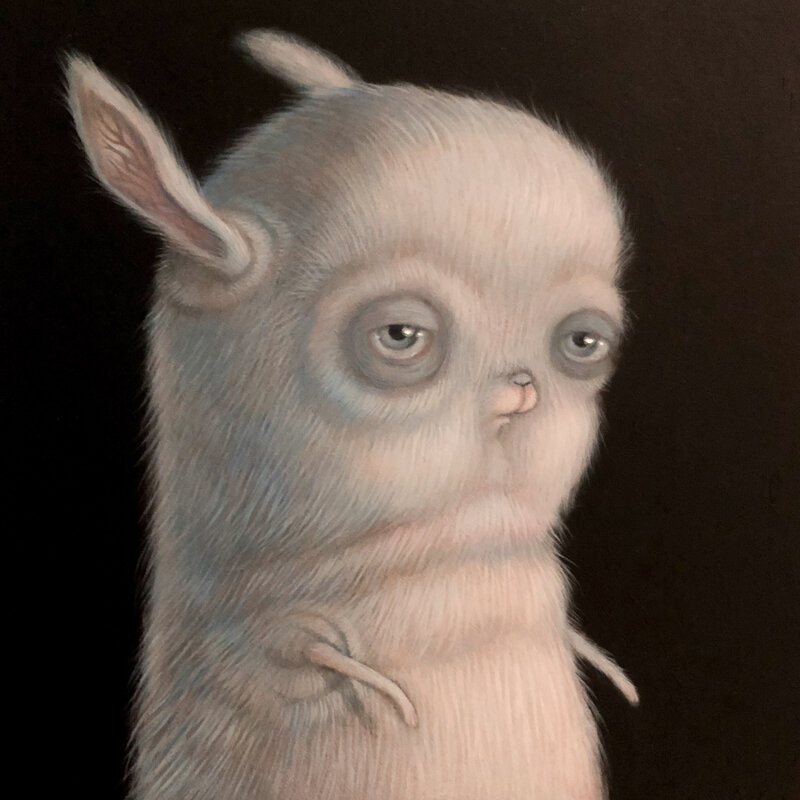
Renee French: Drawing the Air
Renee French is a painter, animator, author and illustrator of books, living and working in Australia. Her distinctive miniature graphite works often summon ‘cute’ creatures whose features are tweaked to the point where cuteness tips into something more menacing, morbidly humorous and yet poignant.
Pictoplasma: It would be great if you could briefly introduce yourself and talk about your graphic work.
Renee French: I'm Renee French. I am a children's book writer, illustrator, a cartoonist making comics, and now I'm doing animation. I've also been a painter for exhibitions, and I've done a lot of graphite drawings over the years.
Your graphic work is really miniscule in size.
That's true. Most of them are two inches, two and a half inches or three inches square. Not much bigger than that. Therefore, it's easy to travel with them and do exhibitions. I once had a show in Tokyo and I brought the entire exhibition in an envelope on the airplane. When I got to the hotel, two people from the gallery showed up to pick up the work, and I just handed them an envelope. It was pretty romantic!

You’ve been quoted as saying you’re really interested in ‘drawing the air’. What do you mean by that?
Oh yeah, that's true. I had a professor who made tiny little landscapes, that was his thing. In England, in the morning, there's this fog, and if you go somewhere that has topiary or trees that go off into the distance, the trees further away are less contrasty. How do you depict that? That is what is meant by ‘drawing the air’, and all of my professor’s little pictures were concentrated on that. I came away from studying with him with this idea of drawing the air. It’s a way to sort of anchor myself, you know? More so in the paintings.
“How far could I push the ugliness before it became not cute anymore?“

When did you come up with the idea to create figural portraits that explore the balance between cute and contorted?
I think it first happened when I did a series – that was for the same exhibition in Japan, actually. I made a little booklet of girls and rabbits who had things wrong with them. The idea with that was, how far could I push the ugliness before it became not cute anymore? I also remember that I was in Germany, giving a slide lecture in Hamburg, and the concept of what cute is in Germany came up. It seemed as though there was a disconnect with cuteness, which I thought was really funny because I'd never found that before. People in Japan really embrace this idea of cuteness with everything they’ve got. Their entire culture has this cuteness in it. But in Germany – and I love the art in Germany – there was this question, like, why? Why do you want something to be cute? What is the purpose of it? That connected with my interest in how far I could push the ugliness before it became not cute anymore. Could I make it so it would actually be something you'd want to look at?
Germany doesn't have this Kawaii culture. But what works perfectly here are your references to the works of Hieronymus Bosch.
Yes, exactly! The creatures are cute in a way, but they're also satanic and tortured. Of course, Bosch was a huge influence on me when I was younger, this ugly-cute thing, together.

Let’s move on to your new adventure with animation. How did you get into animation and how is it going?
I’ve been working on animation in the last year. I've always loved film, and I've always loved animation. It's just that I never felt as though I could do it by myself because it was so time
consuming, and I was always working on a book or an exhibition. The idea of taking the time to make something animated was just so daunting, but it was in the back of my head as the next challenging thing to try. When the pandemic happened, it just seemed like the right time. I needed something really engaging and difficult to keep my mind focused, and to be distracted from what was going on.
I started making little animations using Procreate, which was new for me because I never draw on
a tablet, I only work in pencil or paint. It was a leap, and then I just came up with this weird rabbit, André, who has a little friend, a little potato friend who doesn't speak. André is a bit cruel, a little bit cold, and he has serious boundaries around him, and I'm sure that there's a reason for that. I don't know what this is, exactly, but André is my alter ego. I do his voice.
So, if André is you, does that mean that you are slightly cruel and ask confusing questions?
I have poor boundaries, and I think that André is my guarded self. I When someone comes into his face and says something that he's not so happy about, he has no problem saying, “Well, that's it. We're done. You need to leave now!”

A little bit later, you introduced a second animation project.
That's Stoshy, Bub & Mick, which is a bit darker, even, and it’s more in my heart right now. That’s what I really want to work on at this moment. I’m keeping the André things coming because it’s a series, and because I love André, but yeah, this Stoshy series is really interesting to make. It’s get- ting darker, too. Stoshy is voiced by the hysterical Evan Williams who has this panic in his voice that makes me laugh but also care about stoshy, and Bub is voiced by Brody Wellmaker who has this incredibly scary deep voice, and when he sends his voiceovers they scare me because they’re so dark. And then there’s Jake Black as Mick; his voice is so relaxing and chill and it makes everything ok.
“I like ambiguity. I like it when it's not clear to me what I'm doing, and I have to figure it out.“
The series isn’t traditional narration, it's far more psychedelic than that. But it is more narrative than André & Potato. It has this feeling of being almost like a graphic novel, of really telling a story. Do you know where it's going to go? Or is it going to stay in this kind of fogginess?
I do generally know where it's going because it's this story that I've written, but I also veer away from very straightforward storytelling. It'll become clearer, I think, as it goes along, but right now, I know there are a lot of ambiguous things about it, and I like that.
You're not exactly ‘drawing the air’, but now you're telling the story of the air.
Yeah, that's right. I like ambiguity. I like things that are not clear, and I like it when it's not clear to me what I'm doing, too, and I have to figure it out. I like things that are more of a puzzle. I like the feeling of making the puzzle fit together. It’s very satisfying.
Interview by Pictoplasma published in Pictoplasma Magazin – Issue 2: Character Care, 2022


